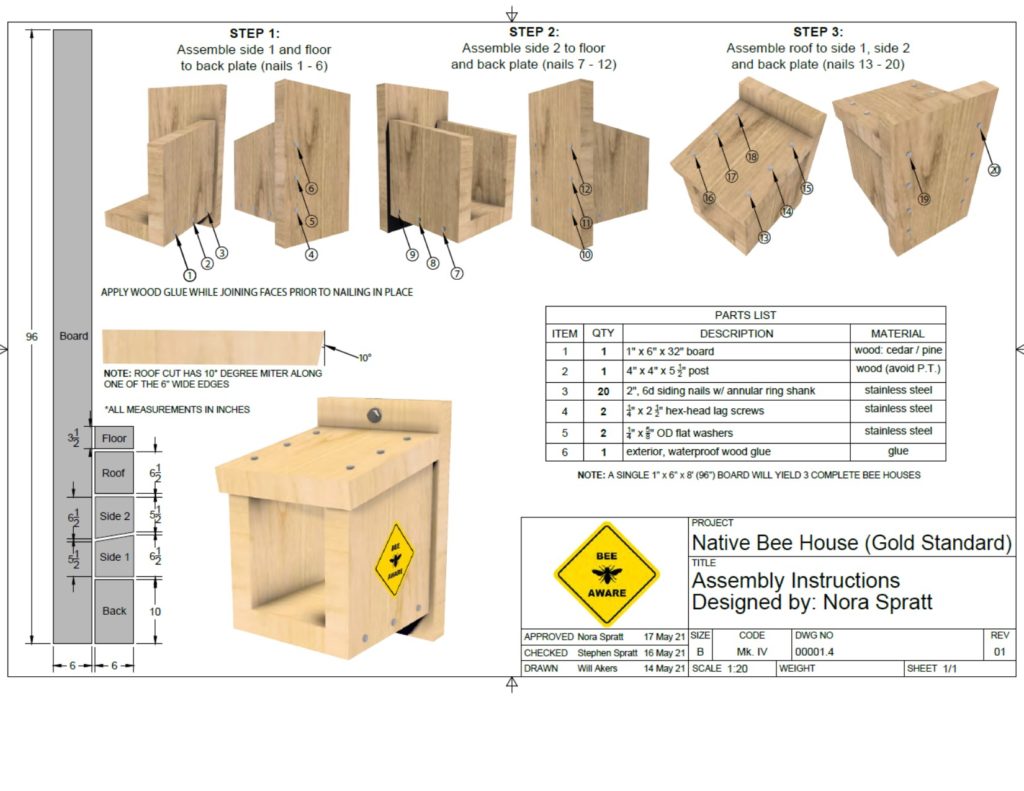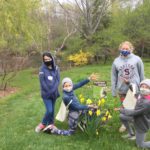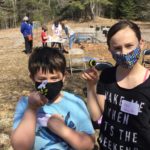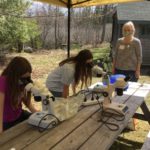Beecome a BeeAware! Steward! Click Here

When you hear the statement “Save the Bees”, you think of the honey bee. However, the honey bees have an entire industry looking out for them and they’re not the only ones who need saving. The declining population of the native bees goes unnoticed in the media. Compared to the honey bee, native bees are far better pollinators, some up to 15 times more effective to the extent that we rely on these pollinators for one in every three bites of food we eat.
My name is Nora Spratt, and I am a sixteen year old Girl Scout Senior determined to earn my Girl Scout Gold Award. My project focuses on the following:
THE ISSUE is that the population of native bees is decreasing and has been seemingly unnoticed. Recent surveys have documented disturbing population declines and even local extinctions of select pollinator species across Europe and the US. Public awareness and education are vital for their survival. Saving the bees is not only crucial to the environment, but it directly affects our global food supply. Pesticides, lack of food sources and habitat, and spread of diseases are the top reasons why the native bee population is declining worldwide.

THE IMPACT of the absence of these super pollinators is already being felt around the world. Although native bees are not as well known as honeybees, they play a vital role in functioning ecosystems and also provide more than $3 billion dollars in fruit-pollination services each year just in the United States. In parts of Western China pear and apple orchards have resorted to hand-pollination due to the absence of bees. Although hand pollination is possible, it is not a viable solution.
MY PLAN is to work with a team of volunteers to create a hands-on educational program about the native solitary hole nesting bees that will be adaptable for both individuals and organizations to utilize and continue to raise awareness. The program will educate the participants about the native solitary hole nesting bees by using the curriculum I develop and empower them to take action with what they learned by constructing and installing bee houses in their communities. The bee houses will provide much-needed nesting habitat for the existing bee population and foster homes for generations to come. Program participants of all ages will walk away with increased awareness and understanding about the native bees’ dire situation. They will also have the knowledge and skills to take positive action in their everyday lives to help save the bees.
MY GOAL is to raise awareness, educate, and empower the public to take positive action to support and protect the existing native bee population, specifically native solitary hole-nesting bees, through the development and implementation of a hands-on educational program.

I worked on my Girl Scout Gold Award, the highest achievement in Girl Scouts (similar to the Boy Scouts Eagle Award). My Gold Project, “Bee Aware”, focused on the declining population of Native Bees by addressing the lack of awareness of these critical pollinators. To do this, I am developed a hands-on, age-appropriate educational program that I am excited to publish online here for anyone to adapt and use to raise awareness and educate others. (Examples are for use in classrooms, clubs, camps, and other organizations). I have piloted my program by collaborating with Blue Hill Heritage Trust and their 4-H Peninsula Explorers and led a series of four two-hour workshops through the months of April and May, and developed and implemented a “Bee Aware” stewardship program for the purposes of maintaining the wooden bee houses the workshop’s youth participants built. Here on the “Bee Aware” website page published you can find the bee house blueprints and instructions, resources and other information. During the 4-H club, kids made 20 milk-carton bee houses have been taken home by the participants, and 10 wooden bee houses have been made for the stewardship program. We have also planted pollinator-friendly flowering plants in BHHT’s garden (where the grown food is donated to the Tree of Life), and participants also took seedlings home to provide pollinator food at their own homes. Participants also took home “bee baths” to provide a safe water source for their little bees! Already my project has provided the existing local population of native solitary hole-nesting bees with an enhanced habitat; with the bee houses, pollinator-friendly plants, and bee baths. More importantly, however, is the participant’s gained raised awareness, education, and desire to take positive action to help save the bees!
Links/Resources
BeeAware! Program Documents:

- Milk Carton Bee Houses (Ver 3)
- Bee House Materials List (Ver 3)
- Installing the BeeAware! Bee House (Ver 5)
- House Maintenance Instructions (Ver 2)
- Stewardship Agreement (Ver 7)
For more information, comments, feedback, and questions about the program OR about the ongoing Stewardship Program, please email: beeawaremaine@gmail.com
BeeAware! In The News:
Pages from GSA Matters Back-to-School 2021
Articles:
Pollinating By Hand: doing bees’ work
Guide to EVERYTHING Bee Houses & Links
Cheap Houses Killing Bees (bad maintenance/construction)
10 ways to help backyard pollinators
Dr. Bee’s Paper: MR448: Bees and Their Habitats in Four New England States
Organizations: 
Crown Bees.com – Native Bees 101 & Bee Hotels!!!
Xerces Society: Pollinator Conservation Program











